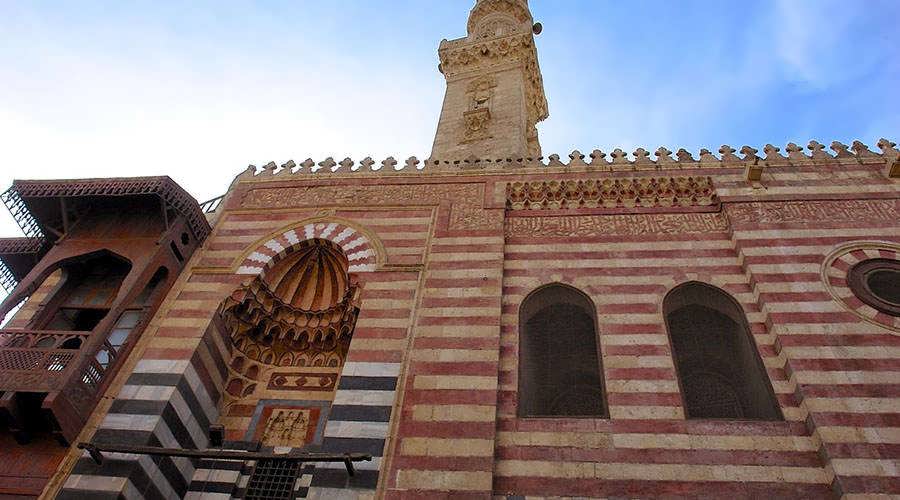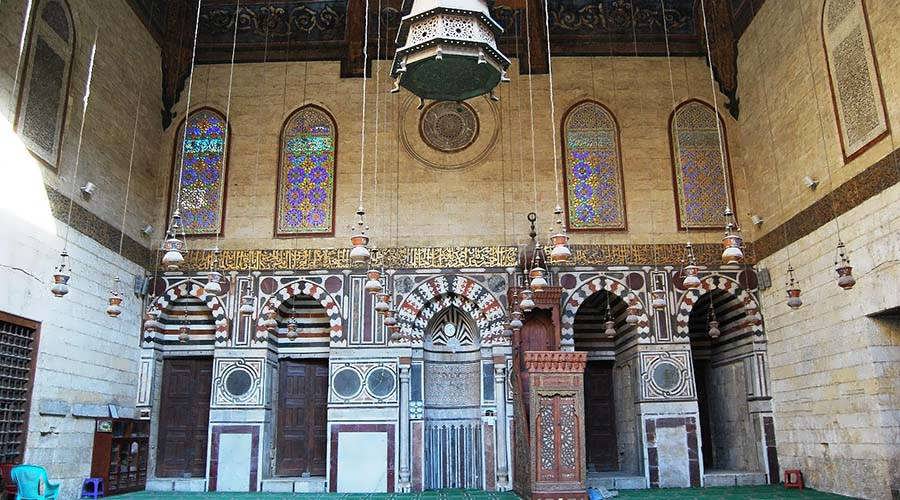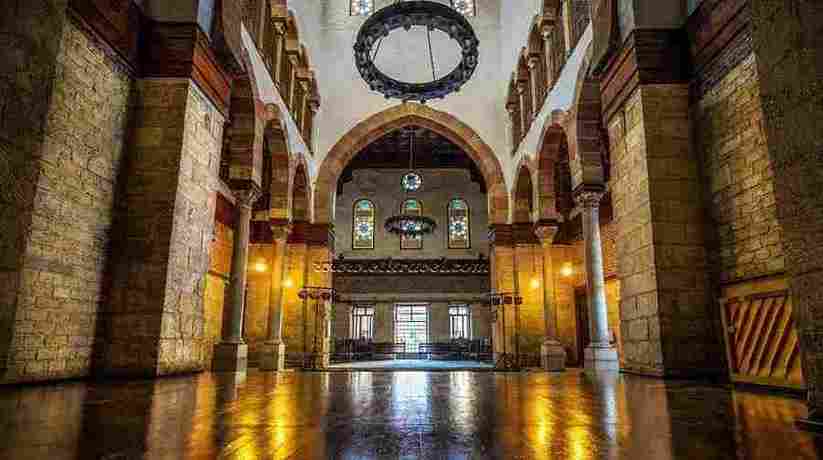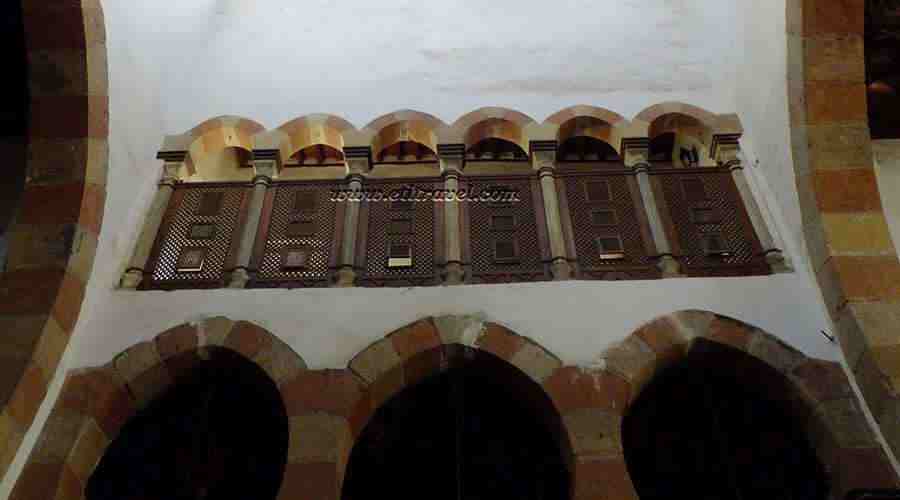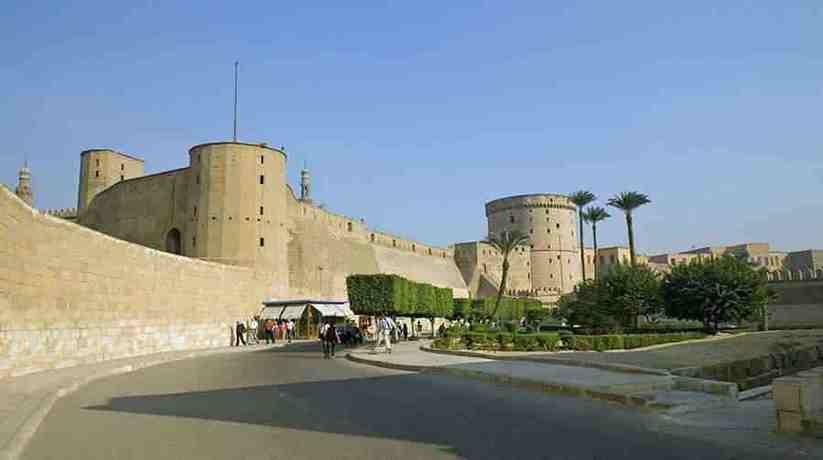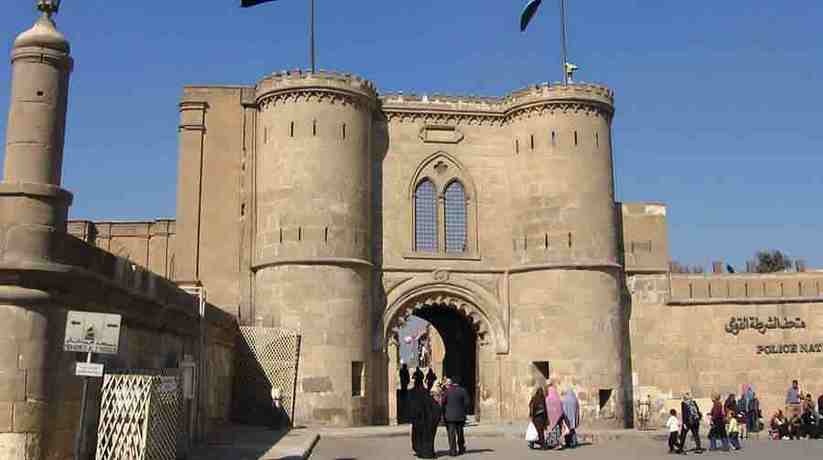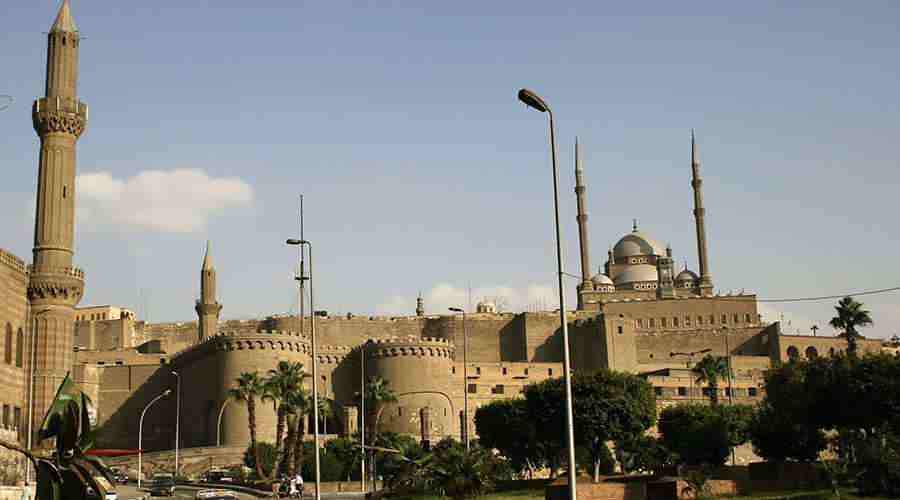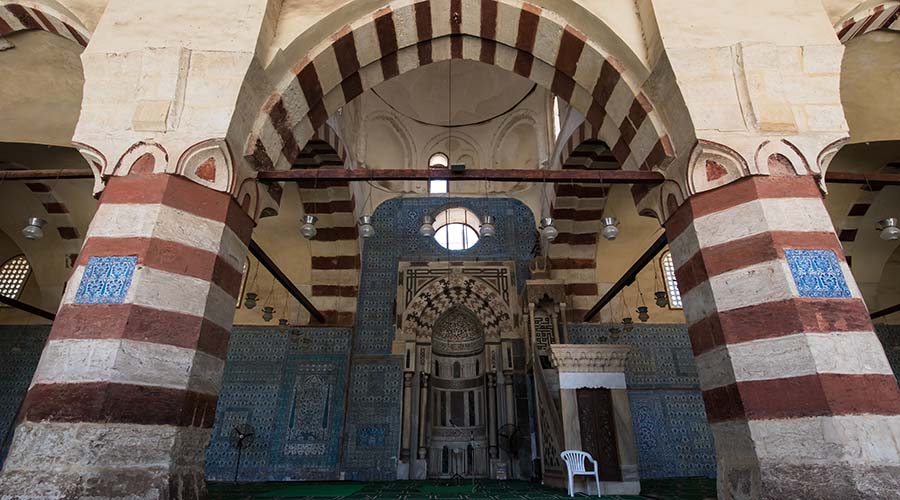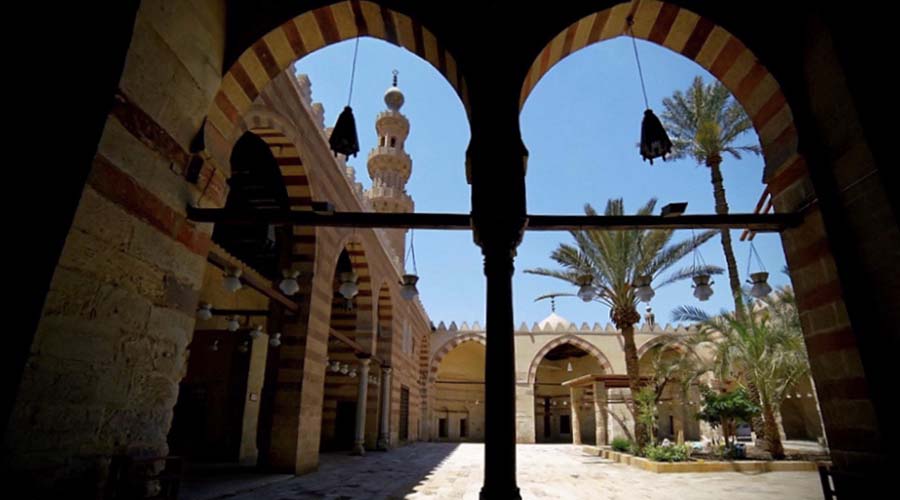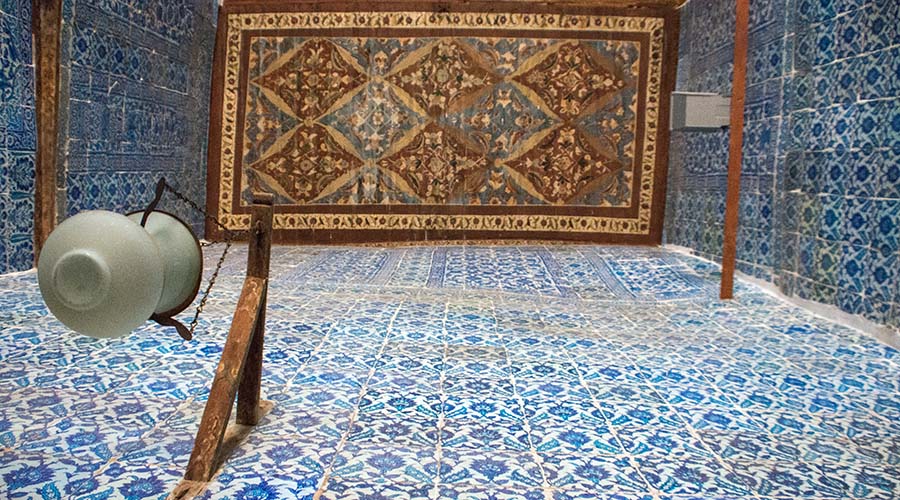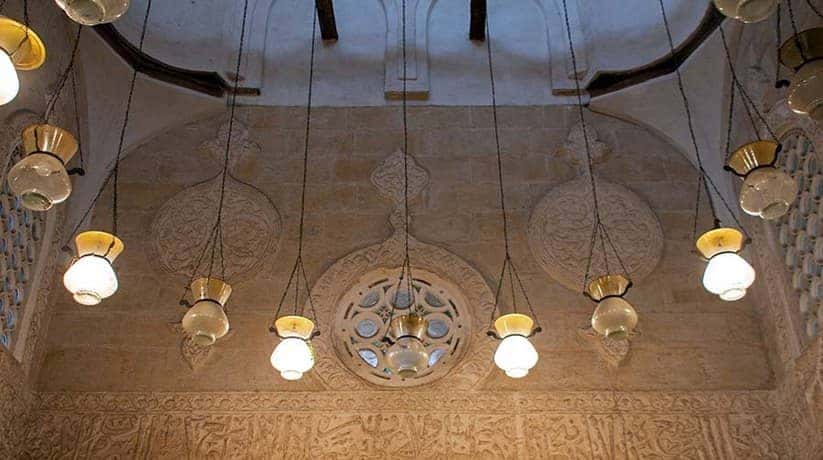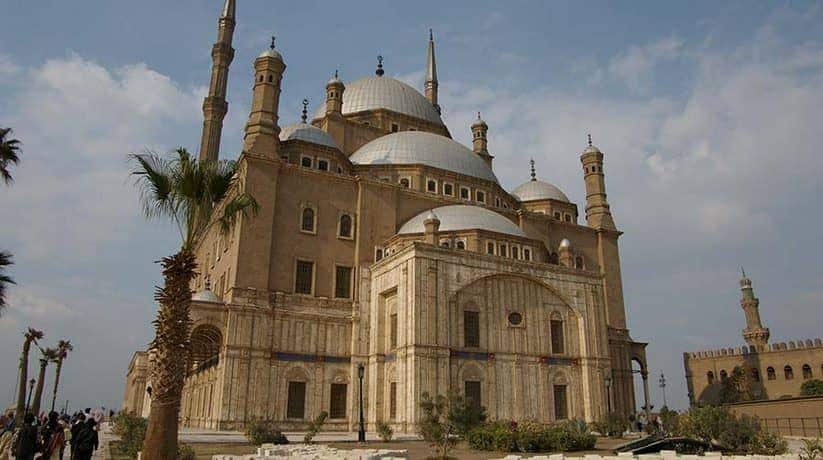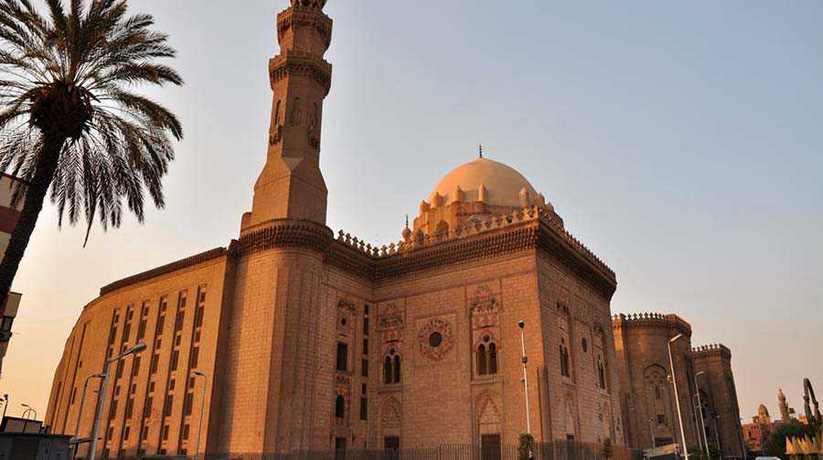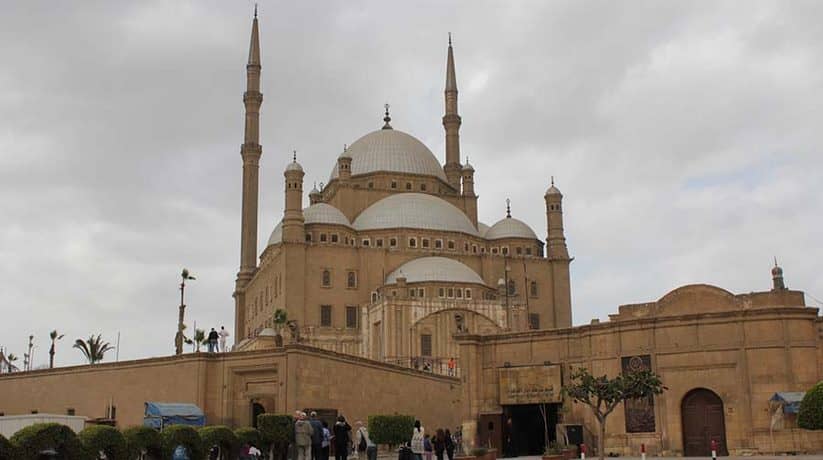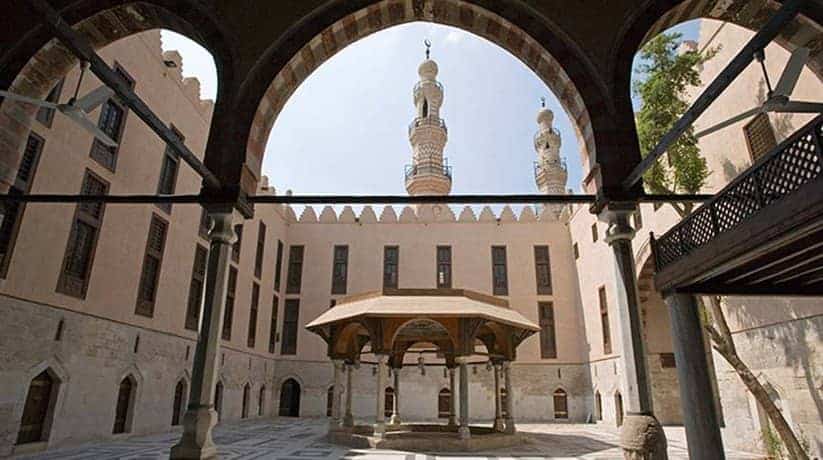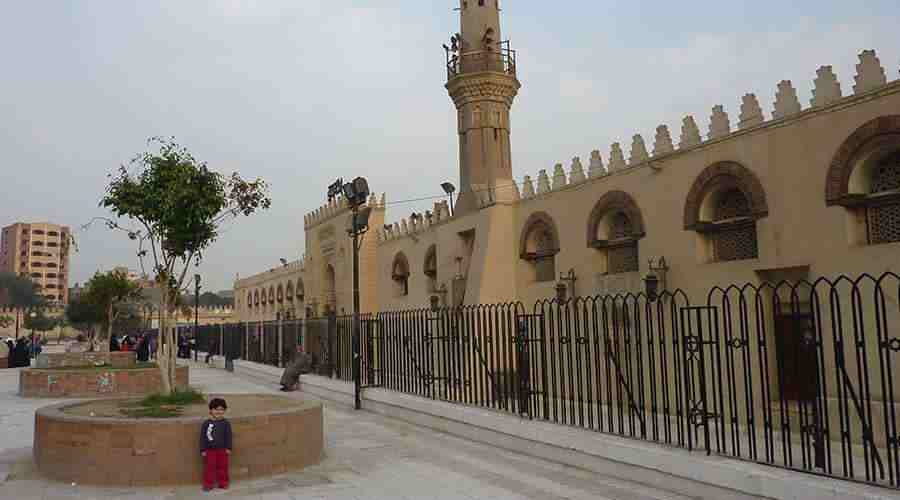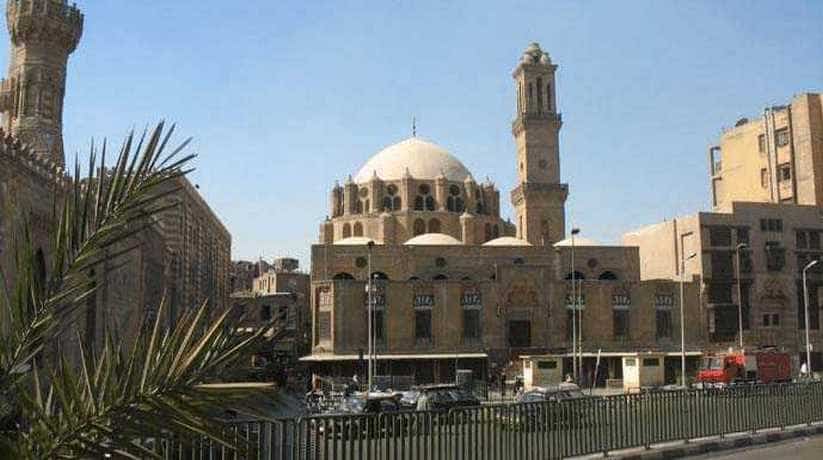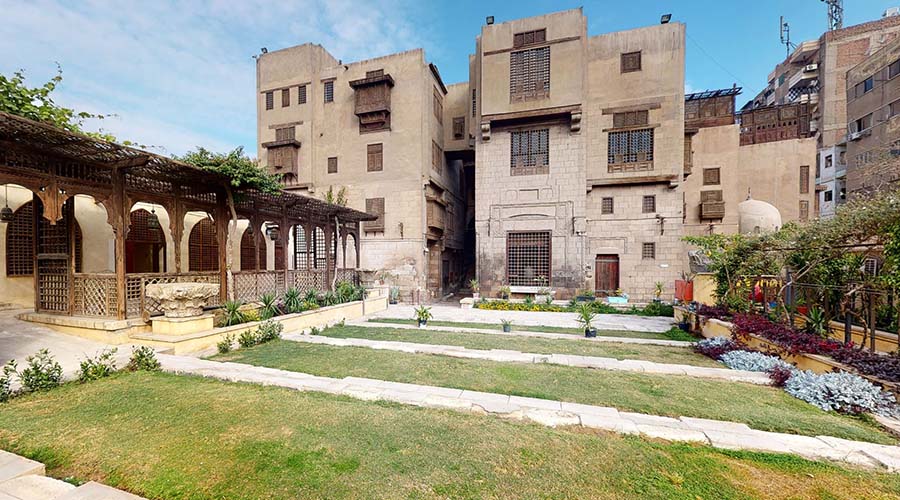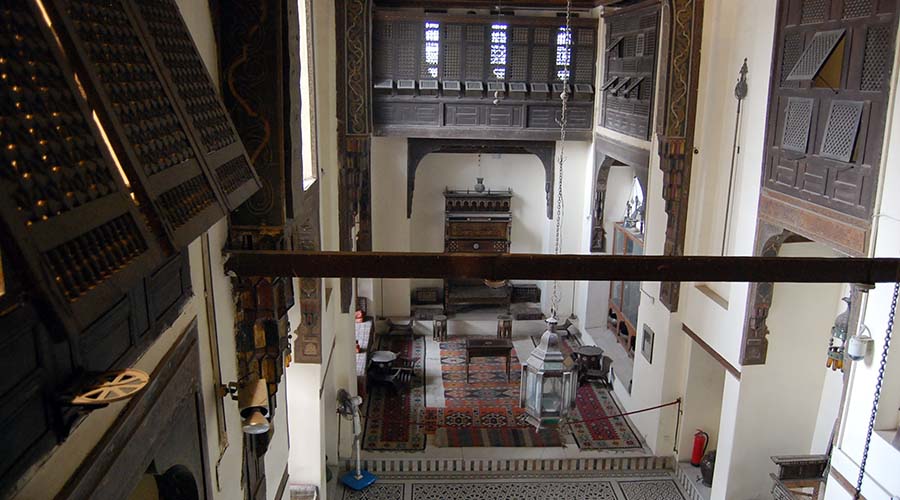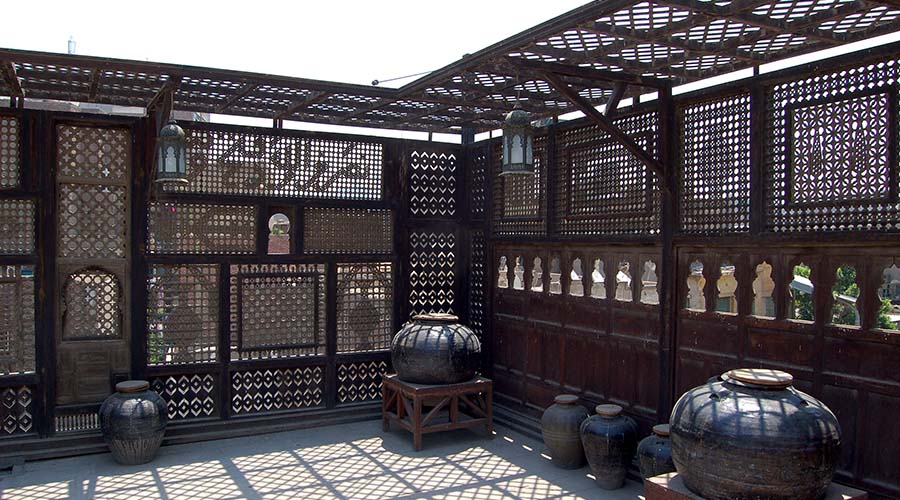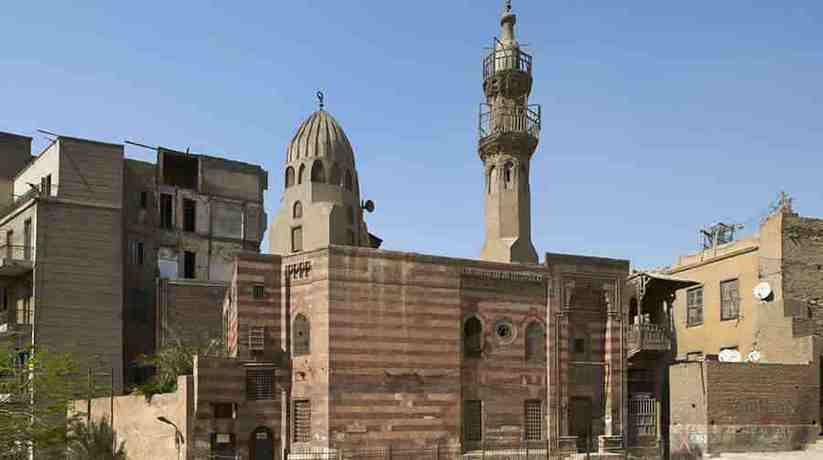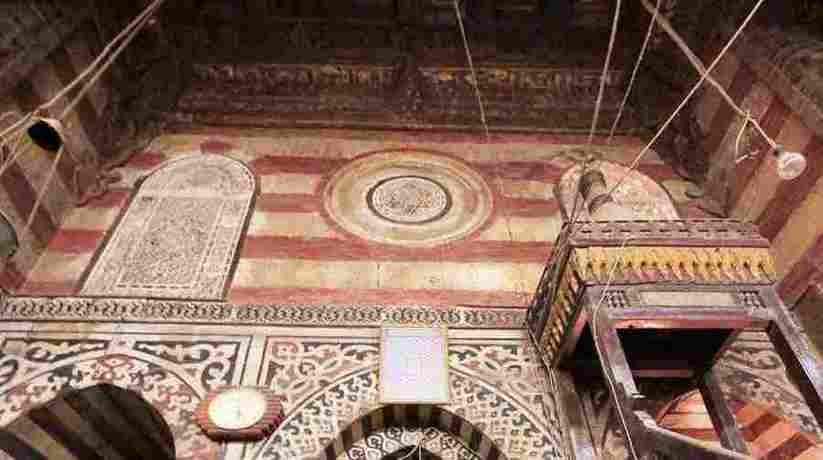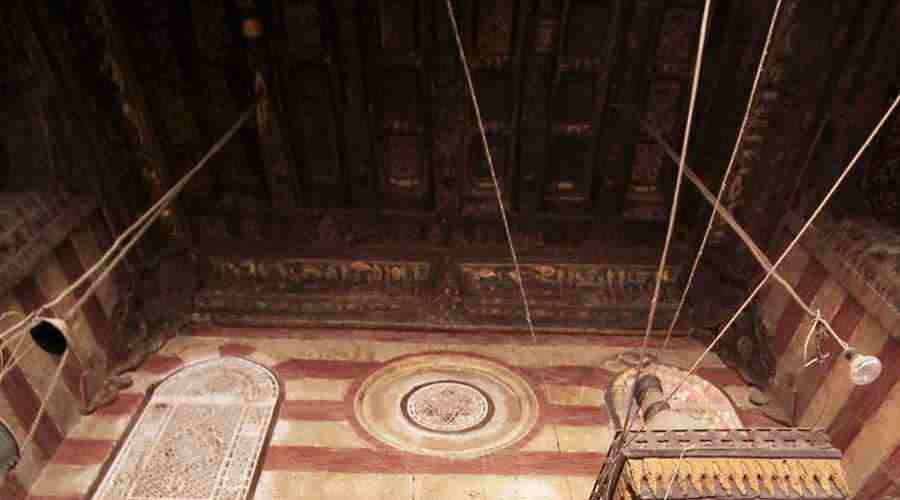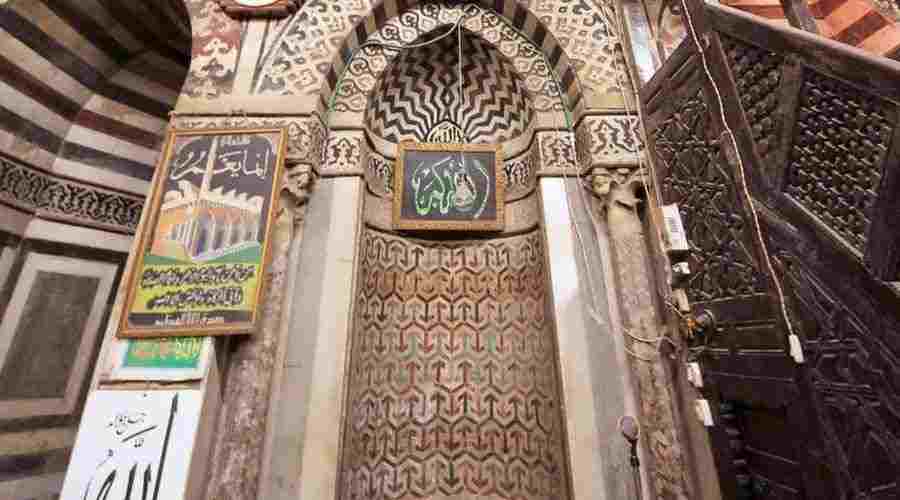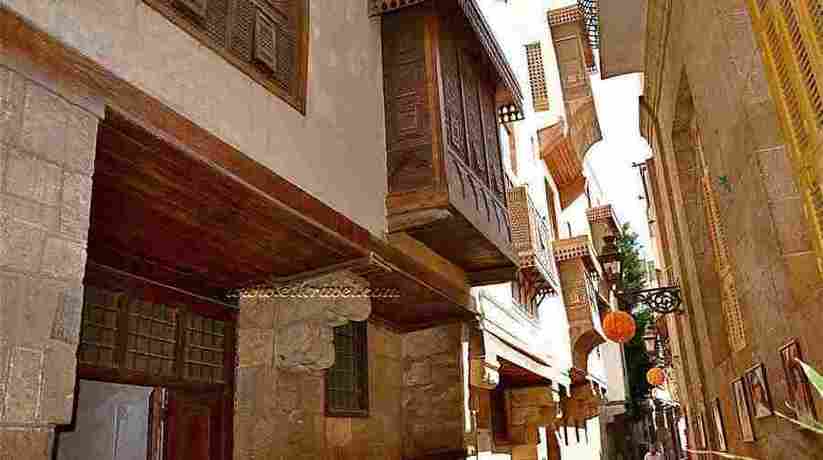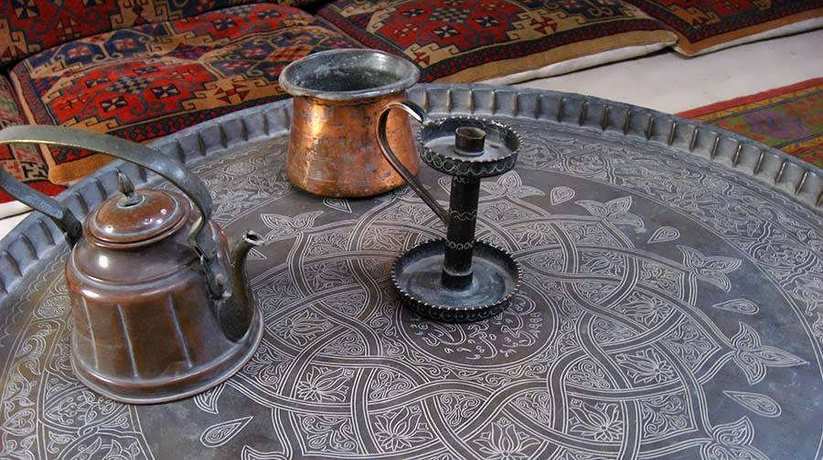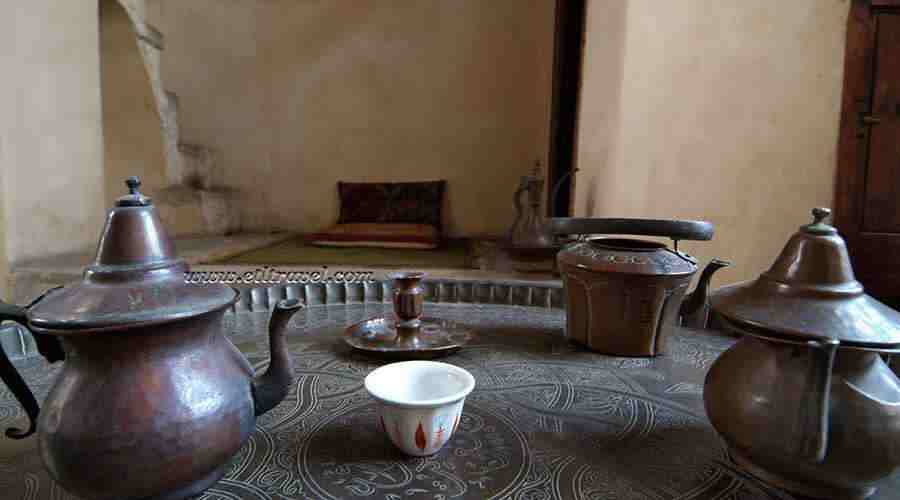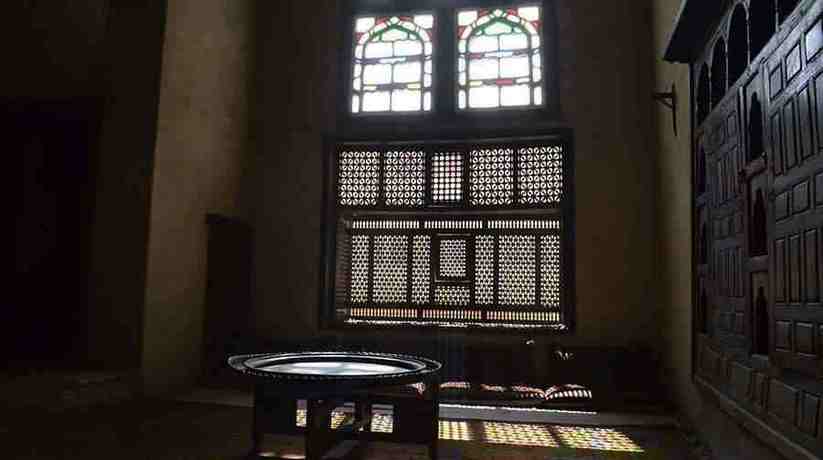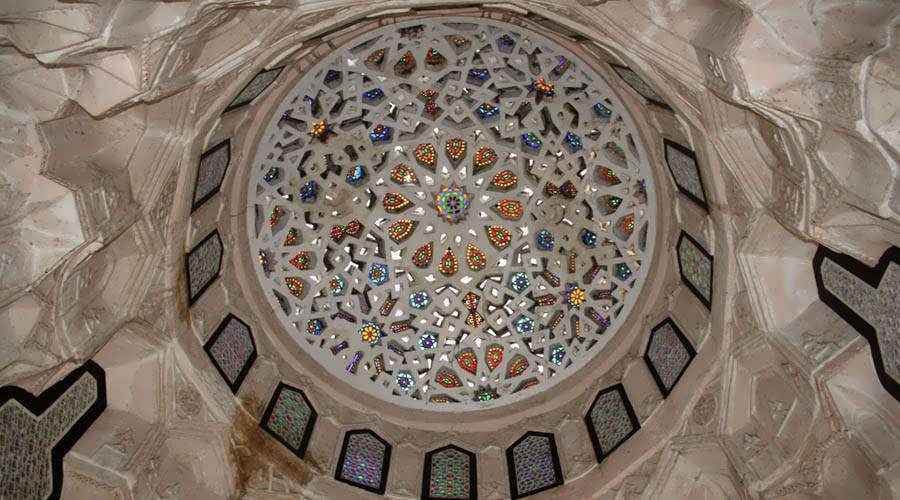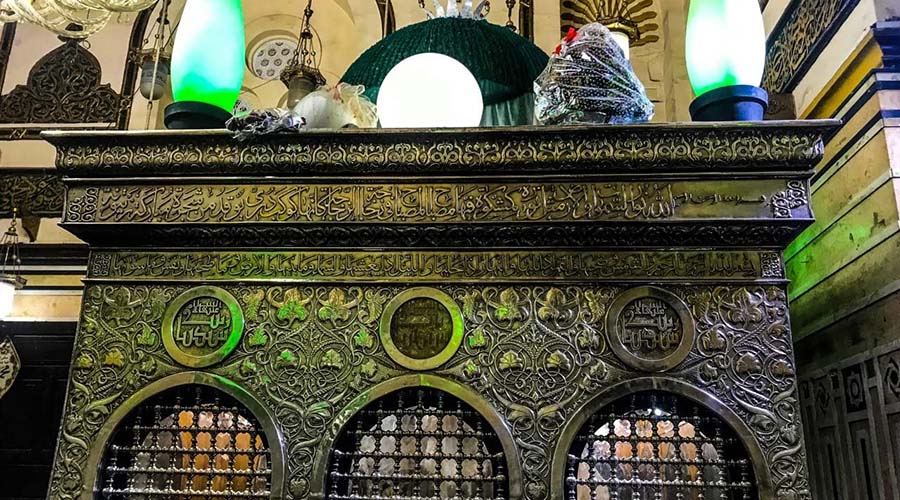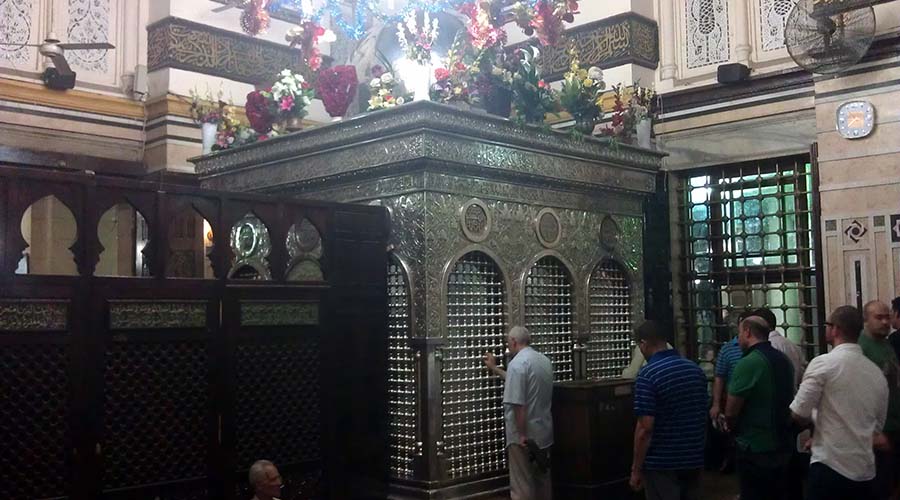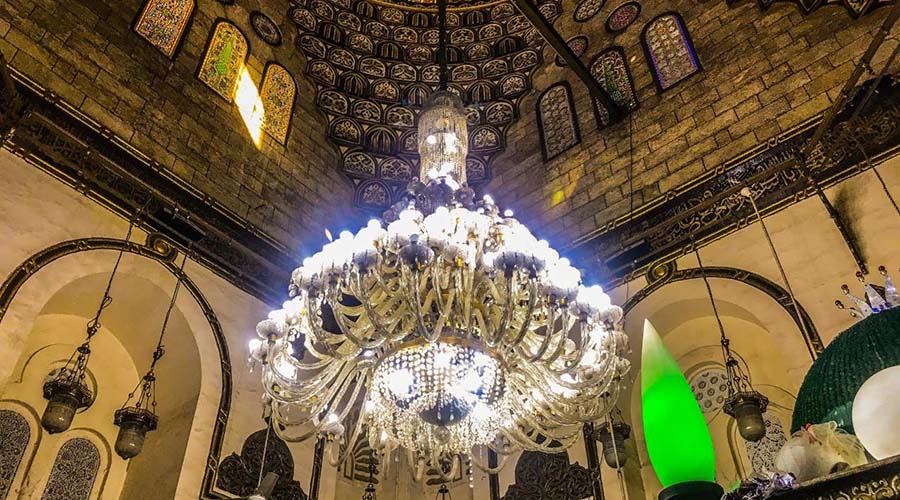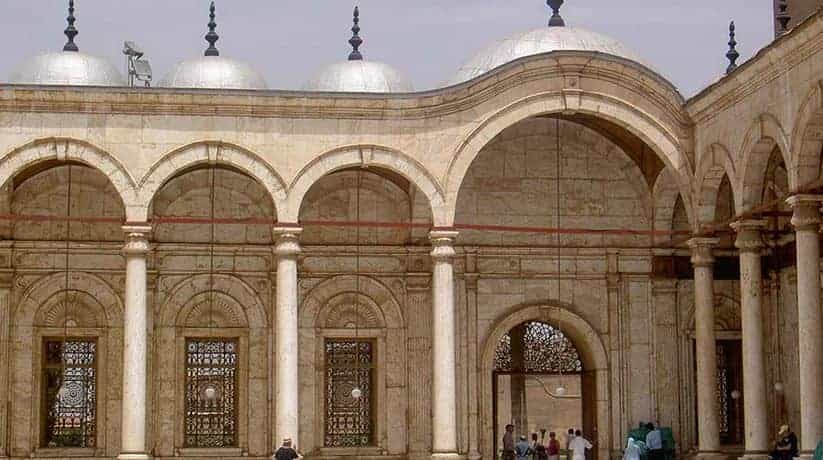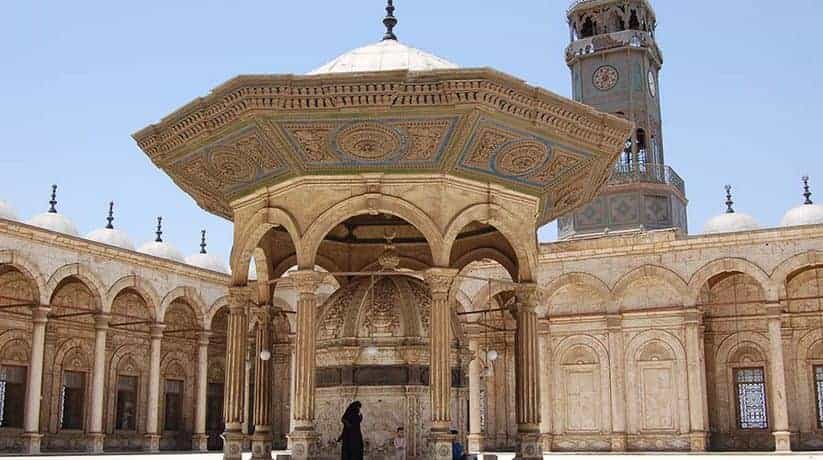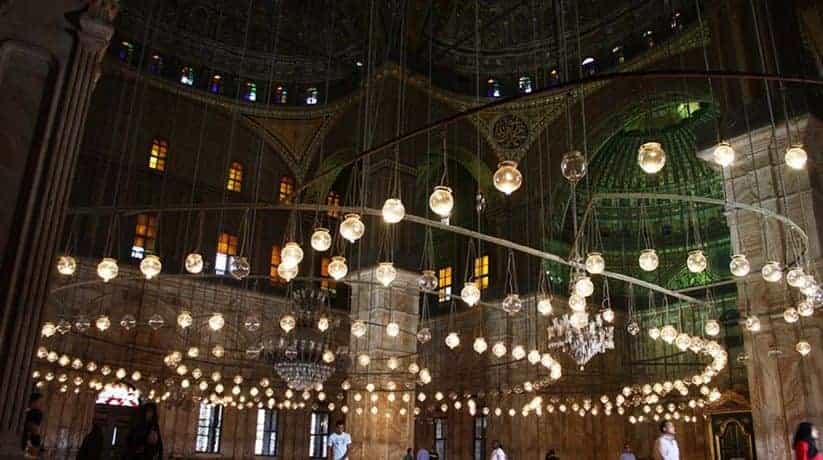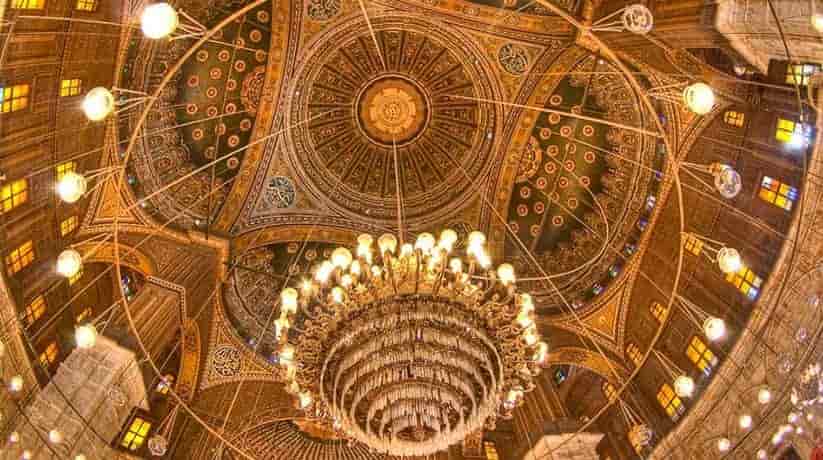Al Ashraf Barsbay complex
Al Ashraf Barsbay complex Cairo, ُEgypt tours, Booking
Al Ashraf Barsbay complex built in 1432 on Al Mu’izz street in Cairo. In fact, the complex belongs to Sultan Al Ashraf Barsbay who ruled Egypt from 1422 to 1438. Madrasa means school and Khanqah means hospital. They built at Al Ashraf Barsbay complex in Northern Cemetery of Cairo. In fact, it was a few years after he built his complex. Moreover, the complex located south of Sultan Qalawun complex. The Khanqah contains three mausoleums. Madrasa built to accommodate only about seventeen Sufis. Four years old were students and ten years old were housed. It provided training to Sufi students studying the Hanafi rite. Moreover, the complex takes up both sides of the street south of Khanqah. Furthermore, it covered a large area but many of its subsidiary structures lost now.
Moreover, the mausoleum at Al Ashraf Barsbay complex had four domes. The larger one carved with an undulating star pattern. It was like that one on the domes of Sultan Faraj. Furthermore, the domes cover the mausoleum and attached to Al Ashraf mosque. The interlaced star pattern is the earliest example. It carved on the exterior of stone domes. A shift from the dominant zigzag moldings of other stone domes from this period. It is including this Sultans monument on Al Muizz street within the city. Two other domes cover a smaller mausoleum on the building’s northern side. There is another mausoleum opens on three sides on it’s eastern side. The eastern dome has a stepped and exterior transition while.
Further details about Al Ashraf Barsbay complex in Cairo:
The one on the northern side has a pyramidal structure at each corner. It leads from the rectangular to the octagonal section. The fourth dome now gone. The two smaller mausoleums built for various relatives of the Sultan. The present facade of Al Ashraf Barsbay complex includes an unattractive minaret. The portal not built using the stalactite-vaulted style. That style was popular during the era. But it rather with a trilobed vault, including groins instead of stalactites. This type of pattern used in the late Mamluk and the Ottoman periods.
Within the structure there is a cross-vaulted vestibule. It communicates through a bend with the prayer hall. The hall is also of a different style than other such buildings of this period. This is an oblong hall some twenty by fifteen meters. The roof supported by two pairs of columns. It is with classical capitals carrying three arches. Each running parallel to the Qibla wall. That is why there are three aisles. The central aisle is somewhat lower than the two side aisles. There are windows on both the east and west that illuminate the hall. Al Ashraf Barsbay complex features unusual decoration. The windows are with stucco and colored glass. The floor adorned with inlaid poly-chrome marbles of high quality.
More details about Al Ashraf Barsbay complex in Cairo:
The prayer niche (Mihrab) of Al Ashraf Barsbay complex is also of plain stone. The ceiling of painted wood was a restoration of the Ottoman period. Even though the pulpit (Minbar) has a star geometric pattern of ivory inlaid in wood. It is also unusual in having curved segments. This masterpiece presented as a gift to the foundation in 1453. It is perhaps the most beautiful Mamluk Minbar in Cairo. On the northern side of the mosque, the central aisle leads to the door of the primary mausoleum. The plan of the mosque allows a perfect position for the sultan’s mausoleum. It is open on three sides, while at the same time attached to the prayer hall. On the interior, the dome’s transitional zone made up of stalactite pendentives.
Neither the exterior nor the rest of the interior prepares one for the height of the dome. Sultan Barsbay used materials from earlier buildings within this mausoleum. The marble inlays of the prayer niche is from good quality. The rows of niches running across the conch. They are reminiscent of the thirteenth and early fourteenth centuries. Sultan Al Ashraf Barsbay buried in this mausoleum. rather than his other mausoleum built in the city proper. Next to the mosque and mausoleum to the south are the remains of the student residences (rab). The foundation provides that there were ten of these. Unlike earlier accommodations, these were not single rooms. They were apartments in two storied duplexes, each with a latrine.
Further details about Al Ashraf Barsbay complex in Cairo:
In each of the upper rooms there is a window that looks out upon the main road. On the upper floor, there was also a hall. In fact, the hall for Sufi gatherings, of which all that remains is a prayer niche. These units appear comfortable. The families of the Sufism, who provided with a whole unit, allowed to live here as well. In earlier foundation deeds, Sufi often required to unmarried. There was no such in this one. At one time, Al Ashraf Barsbay complex extended along both sides of the road. Opposite the structure of the complex there was a zawiya for the Rifai order. It restored in 1478. A Zawiya is a small structure. It is where the ideology of one Shaykh and his order (Tariqa) practiced from which it spread.
Zawiyas superseded Khanqahs as centers of Sufi learning. it became popular among the religious community. The Khanqah here appears to have been independent of any particular order of Sufi. Domes most often surmounted funerary structures. This dome is quite different form those on contemporary mausoleums. Of course, this building not used for funerary purposes. The dome made of brick with a plain exterior surface. The height of the dome not increased. It supported by squinches that start within, not above, the rectangular space.
More details about Al Ashraf Barsbay complex in Cairo:
Later, these squinches rebuilt. Today they have a trilobed shape. They also have reminiscent of the portal treatment of the Khanqah of Barsbay. At one time, there was another zawiya on the same side of the street. It did not have a dome structure. Having two zawiyas unprecedented in previous complexes. There were also two Sabils (fountains) and other structures in the complex. It also includes large apartments and various dependencies. Al Ashraf Barsbay complex points to a trend in Sufism away from the monastic life and to one less regulated.


